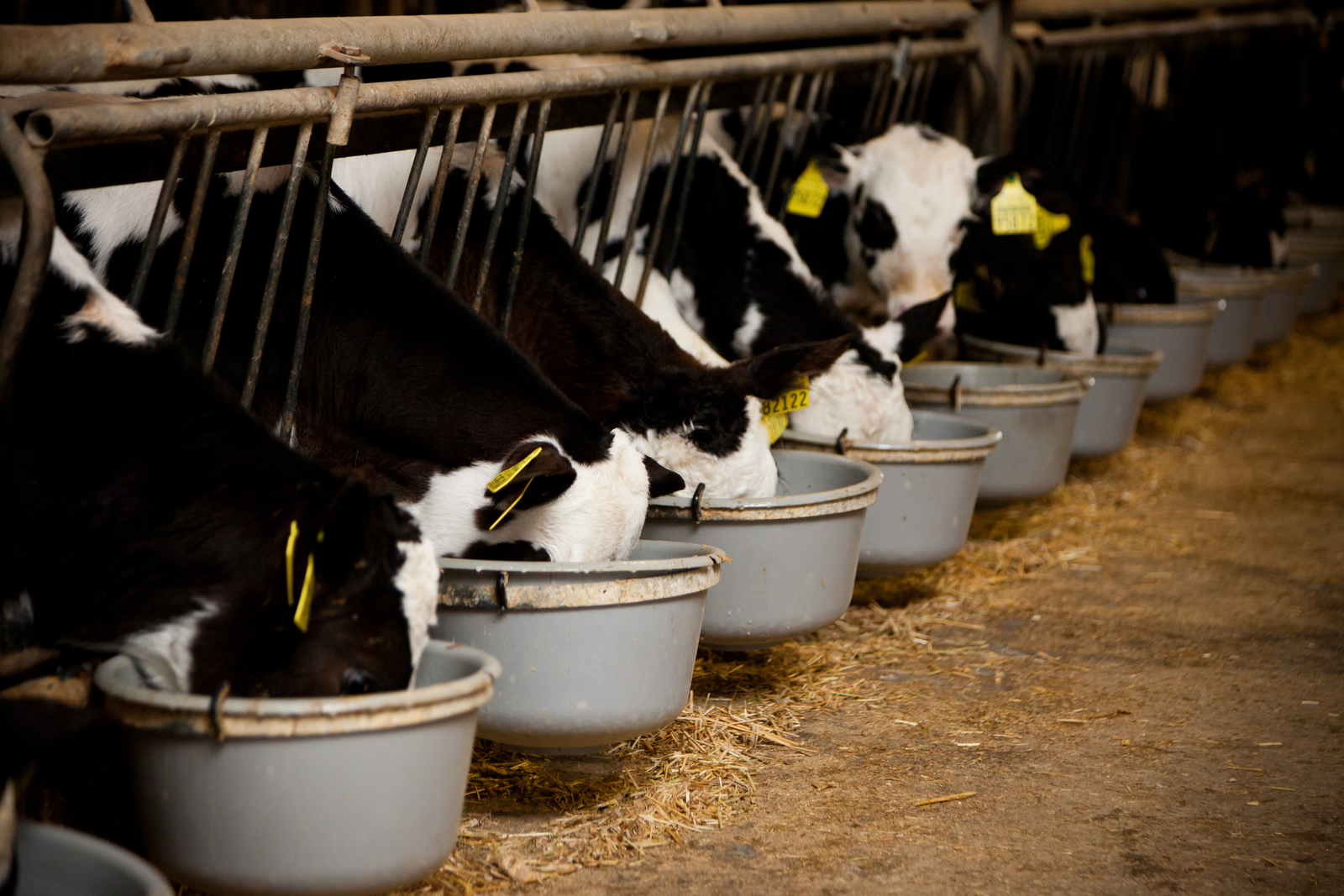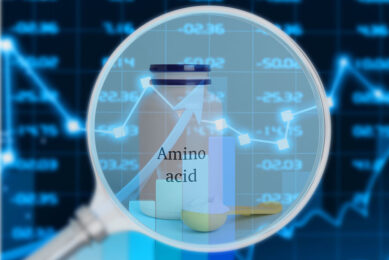Calves can profit from hydrolysed wheat proteins

Young animals need to be fed with nutrients that stimulate growth, but also fuel gut ?development. Hydrolysed wheat protein ?is such an ingredient and is therefore a ?good choice to include in starter feeds for ?veal calves and piglets.
By Dr Emmanuelle Apper, Tereos Syral, France
The replacement of animal or milk proteins with alternative sources in starter feed or in milk replacers is of interest. However, young animals have immature digestive and immune systems and are very sensitive to protein quality. Indeed, some protein sources may reduce digestibility or damage gut health. For instance, inclusion of soy proteins may lead to hypersensitivity in piglets as well as veal calves1. Hydrolysed wheat proteins (HWP) is a soluble protein source produced from vital wheat gluten by a specific process based on hydrolysis, purification, and drying. It is a highly concentrated protein source with around 80% crude protein on a product basis. It also contains 6% fat, 3% starch and 1% fibre on a product basis. No action similar to anti-nutritional factors has been described when wheat proteins are used in formulation of diets for different animal species. These characteristics make HWP interesting as candidates to be included in starter feed diets.
Protein must be highly digestible
Ingested proteins are broken down during digestion into free amino acids, dipeptides, and tripeptides through hydrolysis by digestive enzymes. These products are absorbed by mucosal cells in which intracellular digestion of small peptides occurs. Amino acids are then released into the portal vein and form the metabolic pool, additionally to breakdown of proteins. This pool will be used for body synthesis and as precursors for other substances. Beside these crucial functions, dietary proteins may play an important role in the development of intestinal disorders leading to high diarrhoea incidence associated with increased microbial fermentation of undigested proteins and with greater proliferation of proteolytic and potentially pathogenic bacteria2. Thus, highly digestible protein sources are required to minimise the part of undigested proteins that will be fermented.
Effects in veal calves
HWP are highly digestible proteins for piglets and veal calves. Substituting 10% of high quality LT herring meal with 9.5% HWP in diets of weaned piglets (28 days of age) significantly increases apparent digestibility of dry matter, organic matter, and crude protein calculated from 0 to 2 weeks after weaning and significantly increases apparent digestibility of Crude Protein calculated from 3 to 5 weeks after weaning. In 12-week old veal calves, ileal Crude Protein digestibility of HWP is similar to that of whey proteins and are about 95% as digestible as the amino acids in milk where HWP provided 36 and 76% of crude protein, and skim milk powder provided the remainder3. The shift from skim milk proteins to HWP, which are non-clotting proteins, creates situations in which stomachal curd formation does not occur, leading to a more rapid gastric emptying4. The partial replacement of skim milk proteins by HWP induces an increase in post-prandial plasma concentrations of triglycerides, nonesterified fatty acids, and essential amino acids, and a decrease in post-prandial glycaemia and insulinaemia in veal calves5. As a consequence, energy metabolism is influenced. The partial replacement of skim milk proteins by HWP in milk replacers reduces insulinaemia and glycaemia of veal calves on their entire life6. More globally, there are evidences that utilisation of non-clotting proteins in milk replacers improves insulin sensitivity of veal calves7. The pattern of absorption of digested end-products also influences the utilisation of nutrients by body tissues. In particular, the use of non-clotting diets is shown to enhance the post-prandial amino acid supply8, results in modification of the available energy-yielding nutrients balance, in turn, modifies the metabolic characteristics of tissues through direct and indirect effects on enzyme activities and the regulation of gene expression. As example, the partial replacement of skim milk protein by HWP modifies the orientation of muscle energy metabolism towards a more oxidative type, without modifying muscle growth9.
Gut morphology in piglets
Dietary proteins are known to influence gut health of young animals. In piglets, their effects on gut morphology and function have been extensively studied. It is shown that diets based on legume may reduce activities of most duodenal enzymes and total tract digestibility of energy and N compared with a diet based on casein10. HWP do not reduce villous height and even slightly increases it11. Similar results are reported when 8% spray dried porcine plasma are replaced with 8% HWP12. Significant increases of villous height and digestive enzyme activities are observed in broilers and fish when HWP partly replaces soy proteins in the diet13. Trials in pigs also showed no significant differences on apparent digestibility of dry matter, organic matter, and crude protein are observed when 8% spray-dried porcine plasma was replaced by 8% HWP in diets of 21-day old piglets for a 28-day period14. Beside effects on gut structure and activity, a modulation of immune or anti-oxidative system is observed in rats and fish. Feeding rats with HWP increases secreted IgA in intestinal contents and the phagocytic activity of peritoneal macrophages while it improves anti-oxidative system in juvenile hybrid sturgeon15.
High level performance
The inclusion of HWP in starter-feed diets or in milk replacers ensures high growth performance. Several studies performed on post-weaned piglets and on veal calves demonstrated that the replacement of 5 to 15% animal or milk proteins in diets by HWP does not impair performance and feed efficiency, carcass characteristics, blood haematocrit, and diarrhoea incidence16. In conclusion, an inclusion of 5 to 15% HWP in diet of piglets and veal calves ensures high growth performances. HWP are a high-protein source, devoid of anti-nutritional activities, and highly digestible for young animals. They are non-clotting proteins and, by this way, modify post-prandial absorption of nutrients, especially fat and amino acids, leading to changes in metabolism patterns. A partial replacement of animal proteins by hydrolysed wheat proteins allows high level of performance without impairing gut health.
This information was presented at the recent Feed Science Day (organised by Tereos Syral in Paris).
References 1-16 are available on request
Article featured in AAF 22.7 2014
Join 26,000+ subscribers
Subscribe to our newsletter to stay updated about all the need-to-know content in the feed sector, three times a week. Beheer
Beheer









 WP Admin
WP Admin  Bewerk bericht
Bewerk bericht